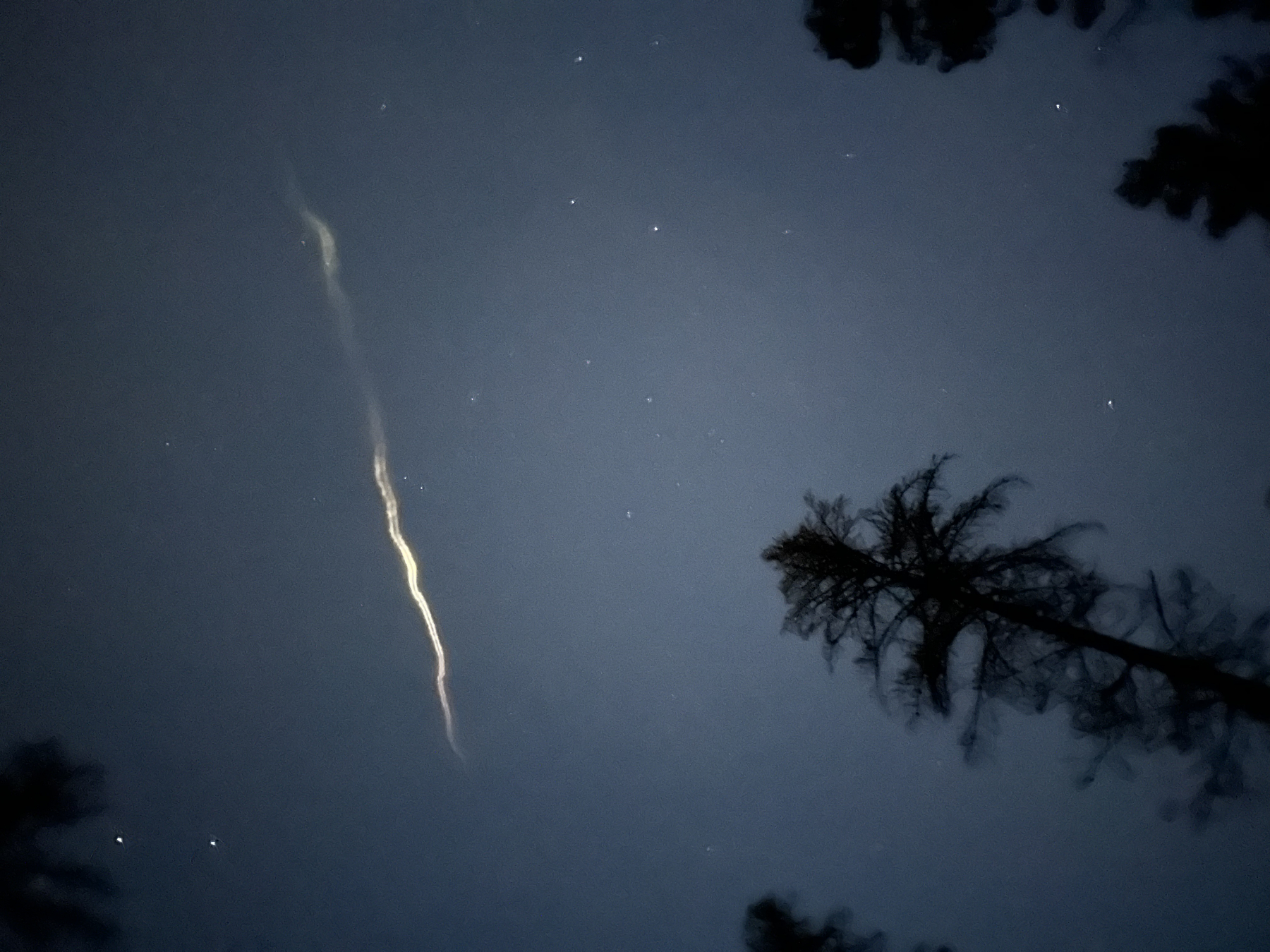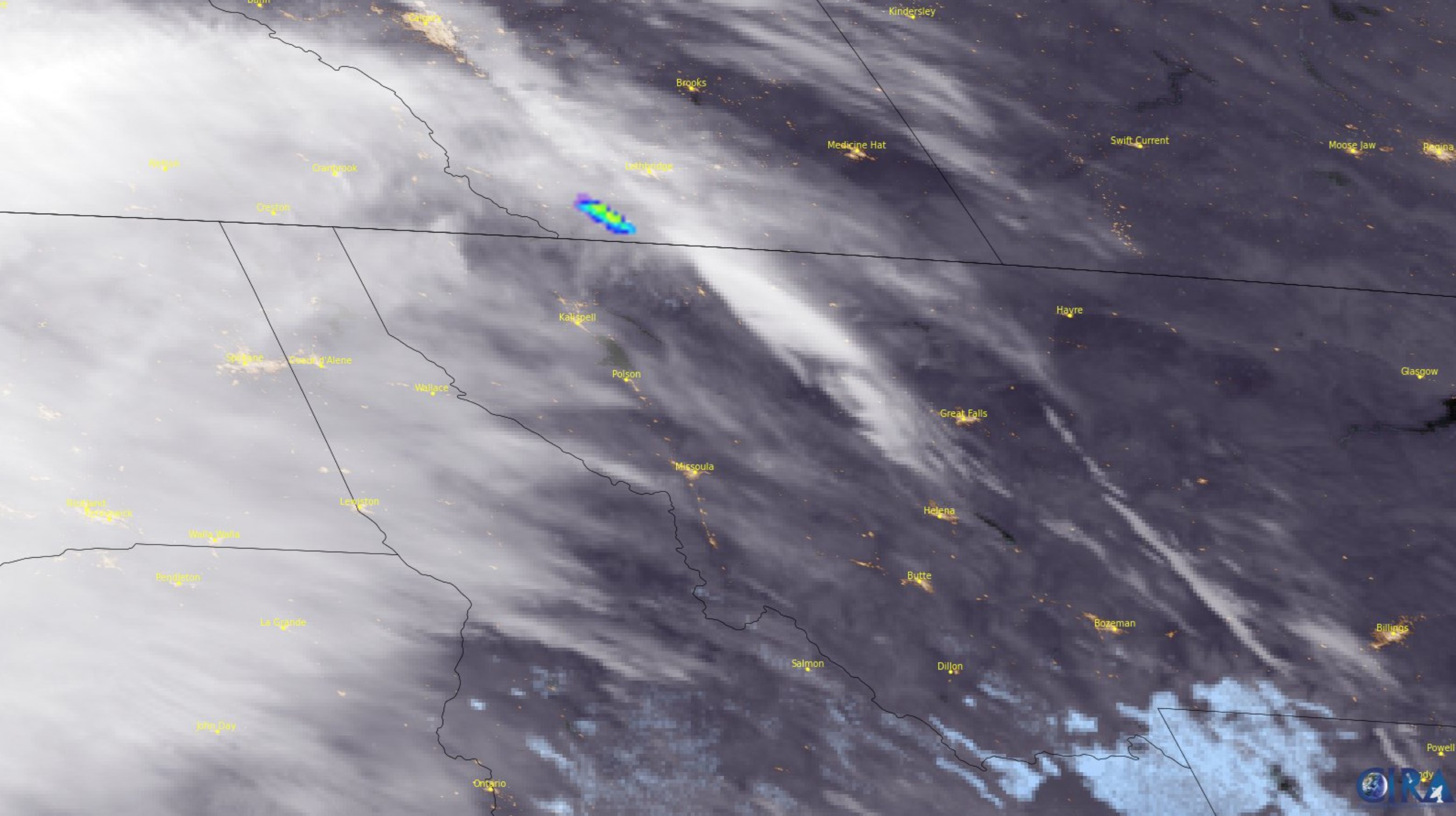
Another fireball lit up the skies this week, this time over the U.S. Midwest and parts of Canada — but unlike the last one, this one came from outer space.
The meteor burned up on the morning of Nov. 13, around 6:31 a.m. Mountain Standard Time (8:31 a.m. EST or 1331 GMT). The resulting fireball appeared to travel southeast and was visible from Alberta and Saskatchewan provinces in Canada and throughout Montana, Idaho and parts of Washington, Wyoming and North Dakota. Numerous doorbell cameras, dash cameras and cell phones captured the fiery spectacle, showing a green streak brightening for a few seconds as it streamed across the early morning sky.
Another fireball was caught on camera earlier in the week on Saturday (Nov. 9), but this one came from a very different source: a falling Starlink satellite that was burning up upon reentry into Earth's atmosphere.

Based on the videos and eyewitness reports submitted to the American Meteor Society (AMS), this appears to have been a brilliant fireball.
"I've seen (and photographed) several fireballs before, but this was among the most spectacular I've seen," wrote Dave R. of Alberta, Canada. "There was a greenish streak and then a very bright flash. The streak continued but shrunk in brightness. Then there was a secondary smaller and dimmer flash along the same meteor trail. This all occurred within 2 seconds or so."
"All of a sudden I could see the road and my surroundings as if it was early/mid morning," wrote Kaitlynn D. in Corvallis, Montana.
"This was the brightest and longest meteor I have seen this close up," Emily G. of Clancy, Montana wrote in a report to AMS.

The fireball was even seen from space.
Two of the GOES weather satellites operated by the National Oceanic and Atmospheric Administration's captured the moment the meteor burned up in Earth's atmosphere. One, the GOES-18 spacecraft, saw the meteor with an instrument designed to detect lightning strikes.

Another NOAA satellite, GOES-16, saw the flash using its own lightning sensor. The sensor is designed to detect bright flashes of light, meaning particularly bright meteors will sometimes appear in its data and imagery.
Here's another look at the meteor signature from the Geostationary Lightning Mapper (GLM) on @NOAA's #GOESEast (#GOES16).Read more about how #GLM tracks meteors: https://t.co/qm3r6bK7Cx https://t.co/8v0t7Rwz9q pic.twitter.com/eWKPclyzNjNovember 13, 2024
Meteors like this one become visible when small pieces of space dust (known meteoroids while in space) that come from asteroids or comets enter Earth's atmosphere at very high speeds.
As they journey through the atmosphere, these small specks of space dust collide with particles of air, which generates friction and produces heat. That heat then vaporizes most meteors, creating the bright streaks of light we see zoom across the sky.
The next meteor showers we can expect will be the Leonid meteor shower, which will unfortunately peak on Nov. 16 under a bright moon which will make seeing them more difficult. After that, we can look forward to December's Geminid meteor shower.







